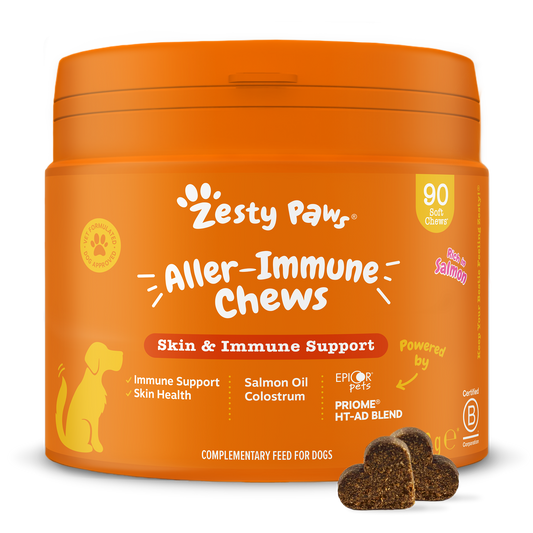You notice it in the small moments first. Your dog hesitates at the bottom of the stairs they used to bound up without a second thought. Your cat, who once leaped effortlessly onto high perches, now carefully calculates each jump. Maybe they're just being cautious, you tell yourself. Maybe they're just getting a bit older.
But here's what many pet parents don't realise: by the time we notice these subtle changes, our furry family members may have been managing discomfort quietly for months. Unlike us, who might complain about a stiff knee or aching back, our cats and dogs are masters at masking their struggles. It's an evolutionary survival mechanism that served them well in the wild, but in our homes, it means we often miss the early signs when support could make the biggest difference.
The hidden reality of pet mobility
The statistics might surprise you. Research shows that over 200,000 dogs annually suffer from mobility-limiting joint conditions, while 60% of cats aged six and older show signs of osteoarthritis in at least one joint. These aren't just numbers, they represent millions of beloved pets navigating daily discomfort that their families may not even recognise.
What makes this particularly challenging is that joint health issues don't announce themselves with dramatic symptoms. Instead, they creep in gradually: a slight stiffness after a nap, a preference for softer surfaces, a subtle reluctance to play as enthusiastically as before.
Understanding what your pet's joints really need
Joint health isn't just about bones and cartilage, it's an intricate system involving multiple components working in harmony. Healthy joints depend on cartilage that cushions movement, synovial fluid that lubricates, and surrounding muscles that provide stability. When any part becomes compromised, it affects everything else.
The challenge is that joint tissue has limited ability to repair itself once damaged, which is why proactive support matters so much more than reactive treatment. While we can't prevent aging, we can support the cellular processes that maintain joint comfort, muscle strength, and overall mobility.
This is where targeted nutritional support becomes invaluable. Products like Zesty Paws Advanced Hip & Joint Salmon Oil are specifically formulated with this complexity in mind, combining omega-3, omega-6, and omega-9 fatty acids from multiple sources to support not just healthy joints, but muscle health, cellular function, and even cognitive wellness because mobility is about so much more than just movement.
The science behind effective mobility support
One of the most researched areas in pet mobility involves omega fatty acids, particularly those from marine sources. These essential fats play crucial roles in managing the body's inflammatory response and supporting cellular health throughout the body.
A comprehensive approach often combines different oil sources for maximum benefit. Salmon oil provides concentrated EPA and DHA for joint support, while flaxseed oil contributes ALA that helps with cellular support. Sunflower oil adds omega-6 balance, and specialised sources like krill oil provide antioxidants for additional support. This multi-oil approach, enhanced with vitamin E, ensures pets receive the complete spectrum their bodies utilise.
The beauty of high-quality formulations like Zesty Paws Advanced Hip & Joint Salmon Oil is that they deliver these nutrients in forms readily absorbed by your pet's body, unlike some alternatives that require complex conversion processes.
Building supportive habits
Supporting your pet's mobility goes beyond supplements. Paying attention to small changes in their movement, like hesitating before a jump or preferring gentler activities, can help you maintain healthy routines that keep their joints comfortable. Consider environmental factors like providing non-slip surfaces, comfortable bedding, and maintaining gentle, regular activity. Temperature matters too as many pets feel stiffer in cold weather.
Most importantly, consistency is key. Joint and cellular health respond best to steady, ongoing support rather than sporadic interventions. Research suggests meaningful changes typically become apparent after about four weeks of consistent use.
Working with your veterinarian
Your vet remains your best partner in developing a mobility support plan. They can assess your pet's current status, recommend appropriate activity levels, and help monitor progress. This becomes even more important as pets age, allowing for early detection and proactive support.
The long-term perspective
Supporting your pet's mobility is an investment in their quality of life throughout their golden years. The goal isn't just adding years to their life, but ensuring they can continue enjoying activities and interactions that bring them joy.
Starting mobility support before obvious problems develop gives you the best opportunity to maintain your pet's natural movement patterns.
Your pet's ability to move comfortably affects every aspect of their daily life, from basic functions to joyful moments of play and exploration. By understanding their mobility needs and providing appropriate support, you're helping ensure they can continue being their happiest, most comfortable selves for years to come.





